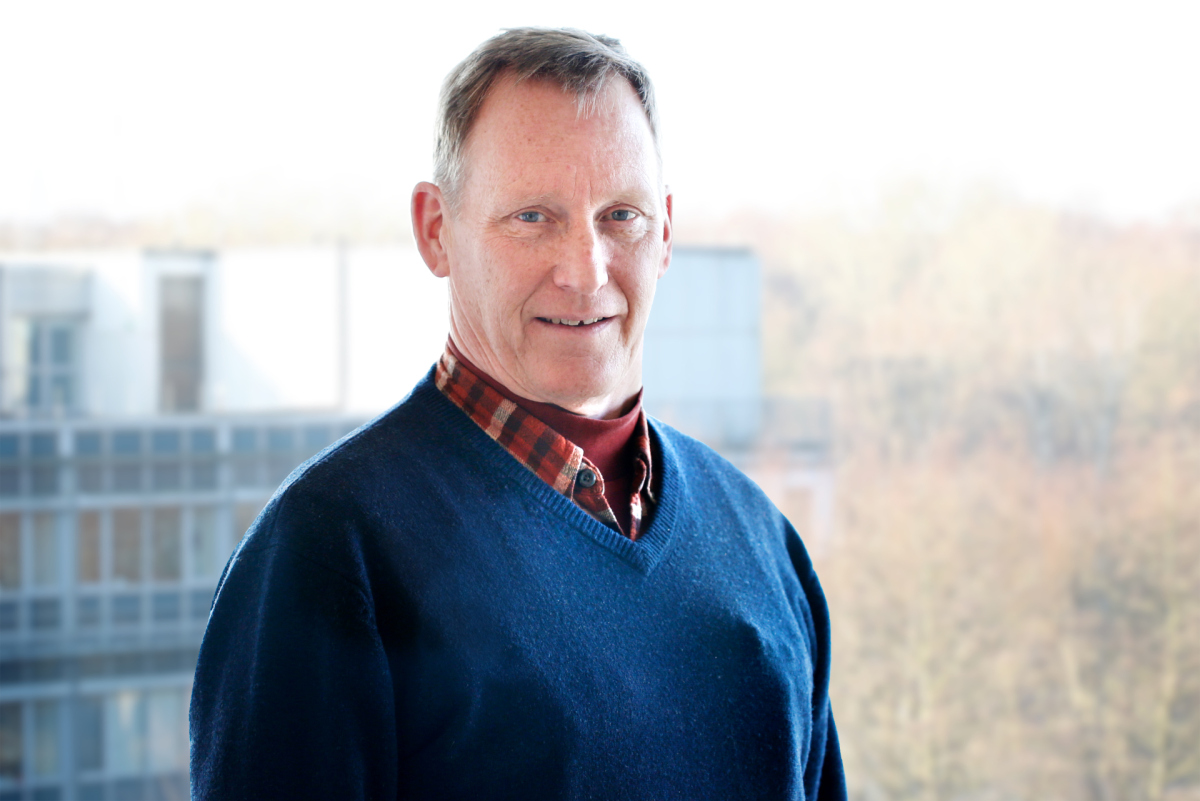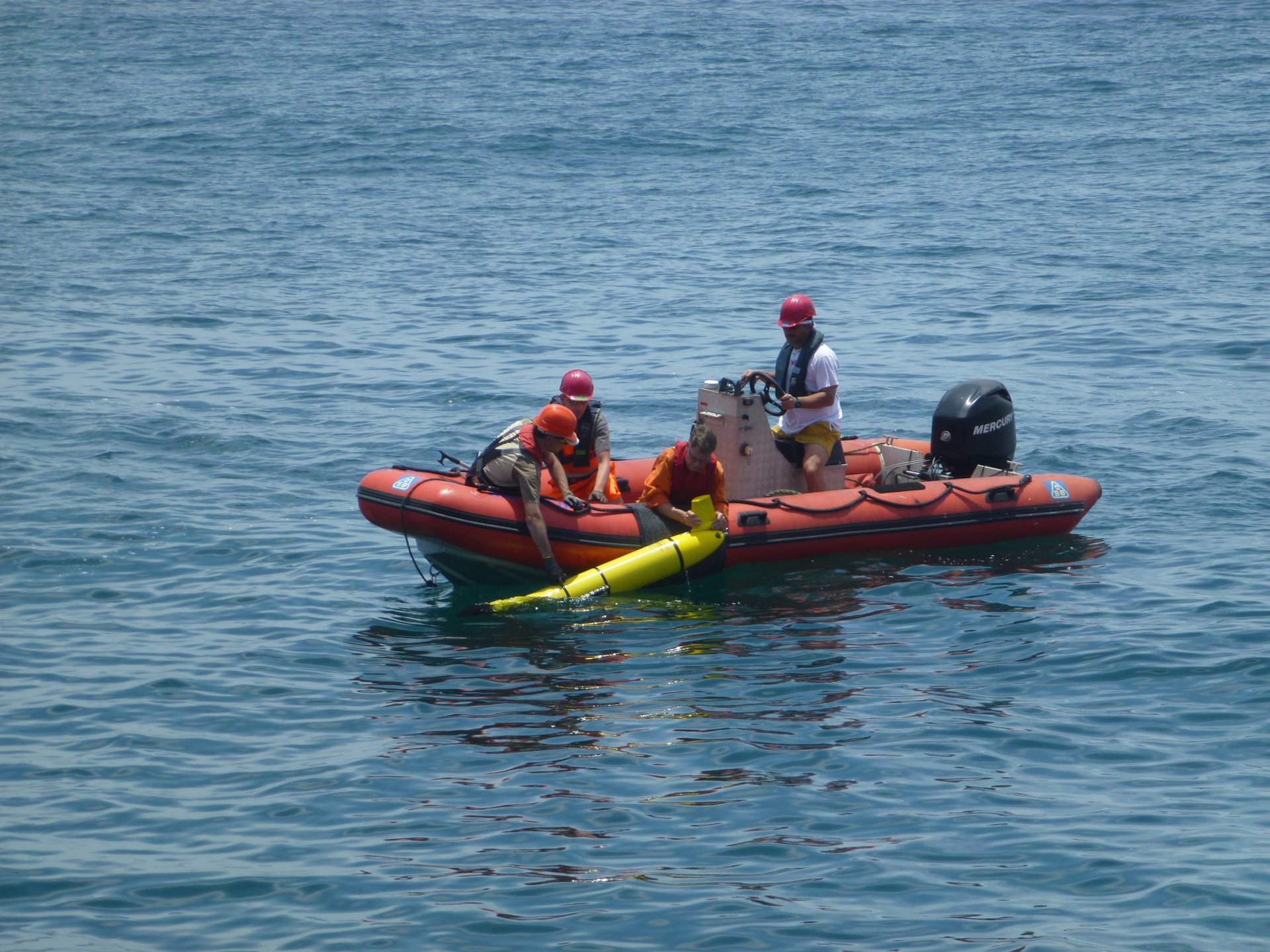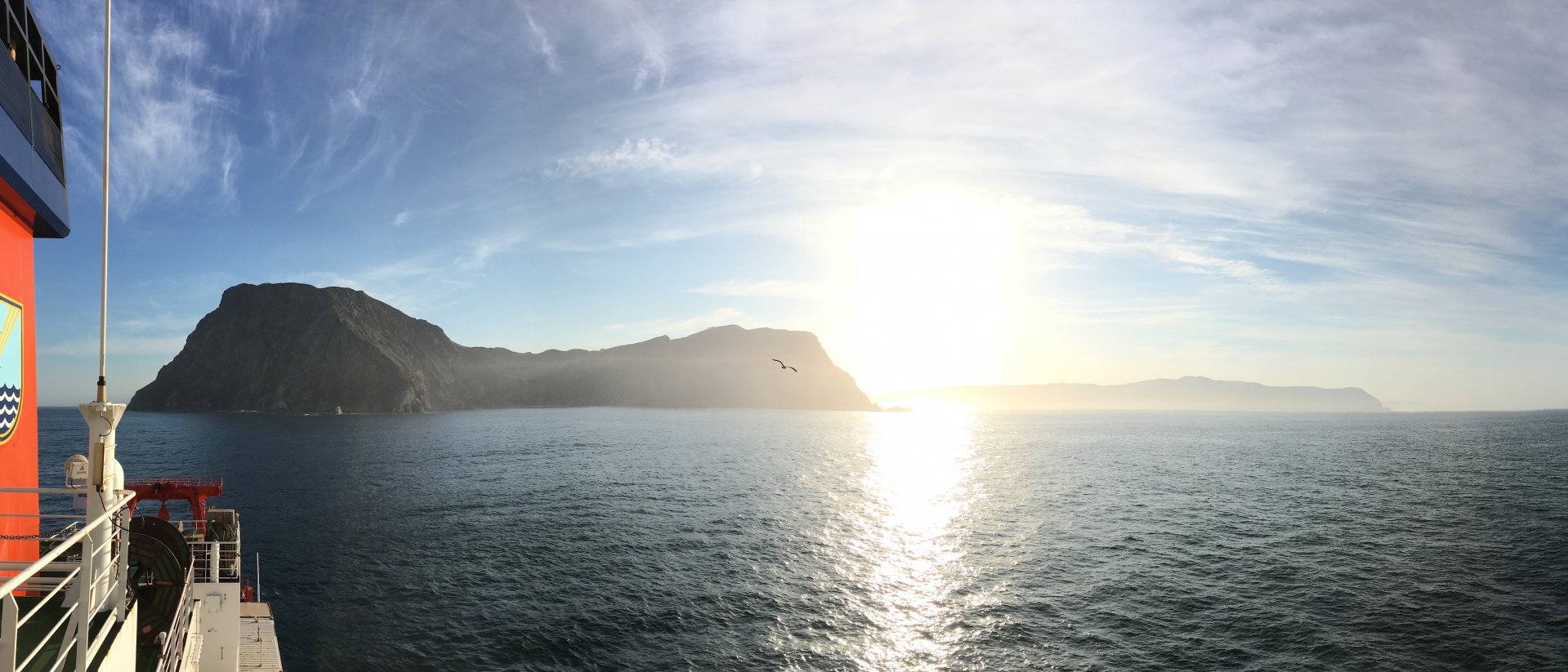- Press Office
- Lost at sea: Far off the coast, Thioglobus perditus lives off its reserve pack
Lost at sea: Far off the coast, Thioglobus perditus lives off its reserve pack
The SUP05 bacterial population puzzles researchers. Why, for example, are these microbes found in the open ocean, even though there is no basis for life for them there? SUP05 bacteria use the sulfur compound hydrogen sulfide as a source of energy, and this is mostly only found near the coasts. Together with the Collaborative Research Center 754 of GEOMAR and the University of Kiel, a group of researchers around Marcel Kuypers from the Max Planck Institute for Marine Microbiology in Bremen has now found some answers: In the sea off Peru during a trip with the research ship Meteor the researchers discovered a representative of the bacterial population that carries its own reserve of sulfur.
In addition the researchers succeeded in deciphering the entire genome of the bacterium. The microbe has quasi received an identification card. Name: Thioglobus perditus, analogous to the “lost sulfur ball“. “Following the decoding of the genome we then developed a gene test, with the help of which we are now able to identify this microbe precisely”, says Cameron Callbeck, first author of the study, who has meanwhile moved from the MPI Bremen to the Swiss Eawag.
Thioglobus perditus transforms sulfide to sulfate using nitrate to breath, and obtains the energy for life from this chemical transformation. The bacteria is distributed worldwide in coastal upwelling regions where hydrogen sulfide diffuses upward from the seafloor. There the Thioglobus perditus metabolism performs ecologically important services: the reaction converts not only sulfide, which is poisonous for other organisms, to its less toxic elemental sulfur form, but also removes carbon dioxide and transforms nitrate to non-reactive dinitrogen gas.
Now the researchers in Bremen have discovered that the bacterium is not only active in coastal regions. Repeatedly, SUP05 bacteria have also been found further out at sea in waters containing no dissolved sulfide. But how can the organism exist under such sub-optimal conditions? “Nobody really knew what they are doing there. Are they active at all?“, asks Gaute Lavik from the Max Planck Institute in Bremen, cruise leader of the Meteor journey.
UThioglobus perditus: Identified but not cultivated
The researchers in Bremen have identified the genome of the protozoon SUP05. Thanks to this genome, they were able to give it a proper biological name: Thioglobus perditus – inspired through the fact that the “globus” bacteria bind sulfur (thio) compounds and are active not only offshore but also further out at sea, that they are so-to-say “lost” (perditus) at sea.
Technically speaking before the Latin designation there is a superscript U. In the system of biological nomenclature this stands for “uncultivated”. It means that the biological species Thioglobus perditus can certainly be genetically identified, but it cannot be enriched in a pure laboratory culture. Such microbes for example need unknown additional substances to grow, or they depend on interactions with other organisms from their surroundings.
With nanoscale secondary ion mass spectrometry, in short NanoSIMS, researchers have for the first time undertaken measurements of individual Thioglobus perditus bacteria cells in the environment. The researchers were thus able to directly gain insights into the biochemical processes operating in the individual SUP05 cells in the environment. These bacteria seem to carry a reserve pack of elemental sulfur. They furthermore possess the necessary cellular machinery to transform elemental sulfur. If the currents carry Thioglobus perditus off the coast to the open sea, the microbe presumably lives off these reserves. As sulfur disappears from the water, the bacteria also vanish.
“The ability to store and grow on elemental sulfur enables the Thioglobus perditus cells also to remain active far from sulfide-rich coastal waters, at least for a limited time”, says co-author Tim Ferdelman from the Bremer Max Planck Institute. “As part of the current study we have for the first time determined how quickly individual cells of SUP05 bacteria take-up carbon dioxide in the environment, and thus grow in these waters. This makes them potentially interesting actors in the global cycles of carbon and nitrogen”, says Ferdelman.
NanoSIMS: Deep view into the cell
Secondary ion mass spectrometry (SIMS) is a method from surface physics used to examine the composition of fixed surfaces and thin layers. The further developed nanoscale secondary ions mass spectrometry (NanoSIMS) has a special optical design that makes a spatial dissolution of ca. 50 nanometres possible. This is a twentieth a millionth of a metre.
The large equipment at the Max Planck Institute for Marine Microbiology in Bremen is one of some twenty such devices worldwide. These are mainly employed in meteorite and material science. In Bremen, the workings of biological structures and individual cells were researched for the first time.
Original publication:
Cameron Callbeck, Gaute Lavik, Timothy G. Ferdelman, Bernhard Fuchs, Harald R. Gruber-Vodicka, Philipp F. Hach, Sten Littmann, Niels S. Schoffelen, Tim Kalvelage, Soren Thomsen, Harald Schnuck, Carolin Löscher, Ruth A. Schmitz, Marcel M. M. Kuypers: “Oxygen minimum zone‚ cryptic sulfur cycling sustained by offshore transport of key sulfur oxidizing bacteria”. Nature Communications
doi:10.1038/s41467-018-04041-x
Participating institutes:
Max Planck Institute for Marine Microbiology, Bremen, Germany
GEOMAR Helmholtz Centre for Ocean Research Kiel
Institute of General Microbiology, University of Kiel
The study was developed as part of the Collaborative Research Centre SFB 754 “Climate-Biogeochemistry interactions in the Tropical Ocean”, a cooperation project of the Christian Albrechts University of Kiel and the GEOMAR Helmholtz Centre for Ocean Research Kiel.
The Collaborative Research Centre 754 (SFB 754) “Climate-Biogeochemistry Interactions in the Tropical Ocean” has been funded by the German Research Foundation (DFG) since 2008. This project involves scientists from the Christian Albrechts University Kiel (CAU), GEOMAR Helmholtz Centre for Ocean Research Kiel and the Max Planck Institute Bremen.
Please direct your queries to:
Head of Press & Communications
MPI for Marine Microbiology
Celsiusstr. 1
D-28359 Bremen
Germany
|
Room: |
1345 |
|
Phone: |

Scientist
MPI for Marine Microbiology
Celsiusstr. 1
D-28359 Bremen
Germany
|
Room: |
3127 |
|
Phone: |


